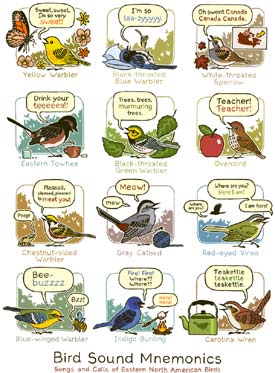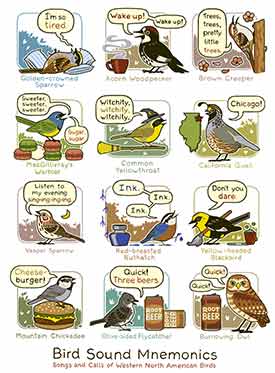3.6 miles
turkey hollow + Seven Oaks
46 degrees
Ran on the trail but barely noticed the river. Distracted by walkers, and dog collars, and a noise that I think was a bird song but could have been someone whistling in the savanna. Heard a bird song that reminded me of the feebee call but was very different. Tried to find some words to match it, but couldn’t. A long note then a few shorter ones. No turkeys in turkey hollow, no red-breasted nuthatches near Becketwood. As I ran north on edmund, I thought about the poem I posted yesterday (which I actually posted this morning) about bird names. In trying to identify birds and birdsongs am I just trying to collect them? What might it mean to resist that urge to name, to know? Then I thought about the value of names, of knowing and noticing. Both–not knowing and knowing–have value. I also thought about different ways of noticing and being with birds that don’t involve staring and studying and collecting. Feeling the shadow of a bird flying overhead, sensing their graceful and frenetic motions.
Ended my run at Seven Oaks again to be with the birds. I think stopping there will be my new thing for May. So many sounds, so much movement all around–flying and rustling. Noticed a tiny bird–some sort of warbler?–just above me. I couldn’t see any distinctive colors on its head or feather and it didn’t call out. Watched a downy woodpecker slowly climbing up a tree. Moved when I was stared down by a squirrel, then returned when I heard the quiet drumming of the black and white feathered bird. Very cool. What an amazing way to end my run!
Here are two recordings I took as I walked around the rim of the Seven Oaks’ sink hole:
I think I might hear a cardinal and a robin, but what else? And are those birds even there, or am I just hearing robins and cardinals everywhere?
For the Birds/ JOHN SHOPTAW
For the abundant along with the rare birds at my feeder of late
For all kinds of birds I’ve lived with here are turning rarer
For the chestnut-backed chickadee, who carries her sunflower chip to the buckthorn to dine on between her toes
For the chickadees once came to my feeder in bunches
For the big round plain brown pair of California towhees who eat in parallel from the bird-crumb table
For though they crumb it clean without a glance or a cheep, I believe this remote old couple is as entwined as any two polarized photons
For the fearsome indigo Steller’s jays, black hooded and crested, Tapper and Sly, as I call them
For Tapper taps twice on an overhanging plum branch at two clucks from my tongue so I’ll know him
For Sly hangs back and shrieks me over and only shows himself after I place on the table their morning quincunx of unsalted peanuts
For he knows Tapper will quack to announce them and then squawk indignantly when he slyly swoops in
For the vast majority
For the dark-eyed juncos, the wide-eyed titmice, the narrow-eyed redbreasted nuthatches, who feed right-side up as they see it, the other birds upside down
For Audubon’s yellow-rumped, Wilson’s and Townsend’s warblers, nobody’s birds, who feed, drink and breed as they can
For the song sparrow’s song and the sparrow who exults in singing it
For a song—how long will that phrase mean what it means
For them all I refill the feeder, even this morning, when all blown-down things crackle underfoot and the Diablo wind seems to growl diabolically and scrape from all corners at once against a sky the color of flint
For the lesser goldfinches, symbolically fierce, who part their beaks at any other kind who would peck a chip in their presence
For the pine siskins, their symbolic match, who used to expose their underwings back at them with its dreadful yellow stripe
For two years running, no siskins at the feeder
For the brown-crowned, as-yet-unkindled sparrows, wintering from Oregon or the Farallon Islands, I sing my two-note welcome, hel-low, pointless
For they won’t learn it with my face masked against wild smoke migrating from the north
For the species too little or big or otherwise unsuited for the feeder
For Anna’s hummingbirds, who love to suck on our pineapple sage
For the red-tailed hawk perched in the smoke-fogged redwood
For soon it’ll be pestered by a twister of crows cawing hawkawkawkawkaw
For a red-tailed hawk I mistook it—something larger, ruffled molten
For the golden eagle it turned out to be—weird—hunched in the chill
For another flew up out of thick air and followed it south out of eyeshot
For those two—not migrants—evacuees clasping their emotional baggage
For the birds, then, what have I to offer
For what kind of refuge is my catalog
For I can’t reckon how to make good their losses
For I meant not to make a life list I meant
For others to partake in my pleasure
For it pleases me to look after the birds
This poem makes me think of the question I was pondering while I ran about collecting bird identifications. “For I mean not to make a life list”. Here’s an explanation of a life list:
life list
A life list is a cumulative record of the bird species an individual birder successfully identifies, and keeping a list is the easiest way to track which birds you have seen. Birders often keep life lists for other reasons as well, however, such as for motivation to see a greater number of species or to garner the prestige that comes from having higher count numbers. Life lists can also be submitted to some birding organizations for recognition or for contest purposes. For most birders, however, it is just fun to keep a life list and add up how many bird species you have seen.
What Species Can Count for a Bird Life List?
The article suggests that you can create your list however you want, but if you want the “prestige” of having it officially recognized, there are rules, which you can read in the article. I am not interested in creating a life list, of cataloging the birds I’ve seen as proof that I’m a good noticer. I like how this poem offers an alternative reason for why you would compile a list–a memory of what has been lost, a celebration of delights, a catalog of unabashed gratitude (the name of a collection by Ross Gay).
The line “For a song—how long will that phrase mean what it means” reminds me of the idea of dead metaphors, like “at a glacial pace”, that no longer have meaning because of dramatic/violent shifts in ecosystems and the destruction of the environment. Does Shoptaw mean it in this way?


